Objective:
Learn the basics of Google Flights and understand how to use the tool to help research route networks to assist in booking reward flights.Learning Outcomes:
- Understand how Google Flights can be helpful in planning reward travel
- Learn the basics of the Google Flights tool, including how to apply filters and interpret search results
- Learn how to use Google Flights to aid in searching for award space
Introduction
Searching for award space can be a daunting task without the right tools, with many passengers relying on their loyalty program search engine to find available flights. Unfortunately for the consumer, the reward programs are often inconsistent with displaying the best route network, and can often omit options entirely. Furthermore, reward programs will only display some partner award availability, and not all possible routings. Google Flights is a tool I rely on heavily when planning award travel. Inputting an origin and destination will provide nearly all valid routes between A and B, which will give me a better understanding to where I should be focusing my efforts in accruing miles. Furthermore, Google Flights offers a number of useful filters to help narrow down search results, which is especially helpful with trip planning. The filters include:- One-way, round-trip, or multi-city (not recommended for beginners)
- Cabin Class
- Number of passengers (not applicable when researching route networks)
- Origin and destination
- Travel dates
- Maximum number of connections
- Price (not applicable when researching route networks)
- Specific airlines or alliances
- Times (departure and arrival)
- More (flight duration, connection preferences)
How To Search on Google Flights
Let’s look at an example: Tyler wants to fly from Vancouver to Singapore, but has no idea what airlines even fly there. Using Google Flights, Tyler can input his origin, destination and travel dates to populate many of the valid routings between the two cities. Tyler knows he wants to fly business class, so he changes the cabin class on the top right side. He also knows it’s easier to plan award travel looking one-direction at a time, so he switches from round-trip to one-way on the top left side. The date can easily be changed by selecting from the calendar under the origin city.
Tyler knows he wants to fly business class, so he changes the cabin class on the top right side. He also knows it’s easier to plan award travel looking one-direction at a time, so he switches from round-trip to one-way on the top left side. The date can easily be changed by selecting from the calendar under the origin city.
 Google flights will display search results based on their interpretation of the most optimum route (a combination of flight length and price) with the best at the top. For the purpose of route research, passengers can ignore the prices as they are not indicative of award seat availability.
Google flights will display search results based on their interpretation of the most optimum route (a combination of flight length and price) with the best at the top. For the purpose of route research, passengers can ignore the prices as they are not indicative of award seat availability.
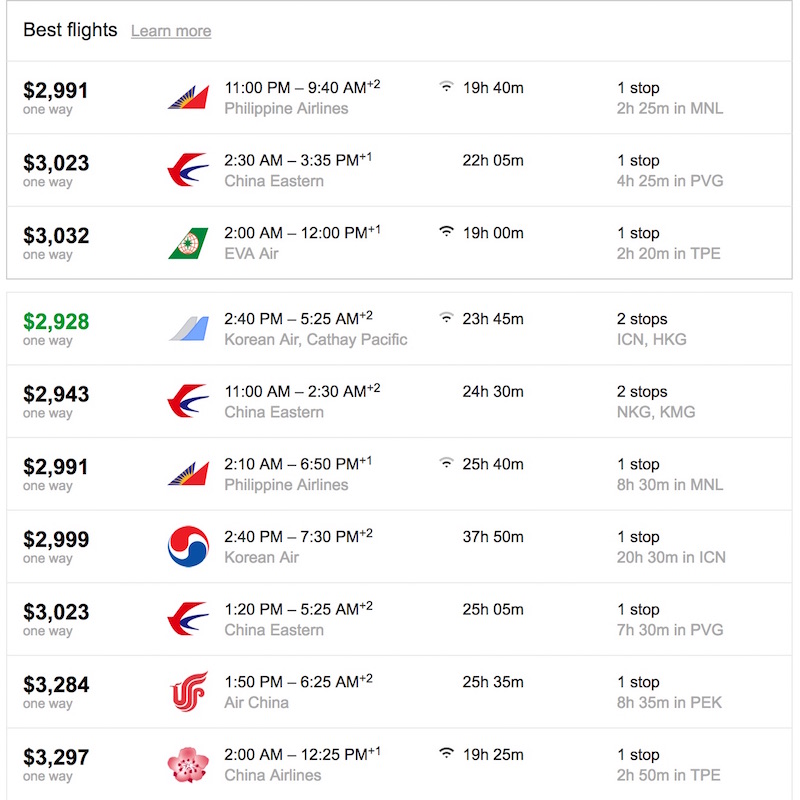 With longer, more expensive flights at the bottom. (Remember not to focus on the price, as we are simply looking for the best routing options to get us to our destination).
With longer, more expensive flights at the bottom. (Remember not to focus on the price, as we are simply looking for the best routing options to get us to our destination).
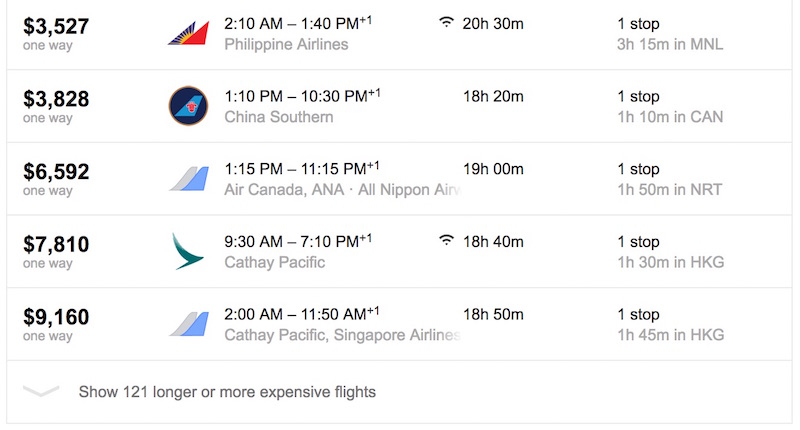
How To Use Google Flights Search Filters To Find Award Space
Continuing with the example: Tyler has an abundance of Aeroplan and Alaska Airlines miles. He decides to focus his search on airlines that partner with these two programs, starting with Aeroplan first. Filtering for Aeroplan is easy, since Air Canada is a member of Star Alliance. Tyler simply goes to the filter for ‘Airline’ and selects ‘Star Alliance’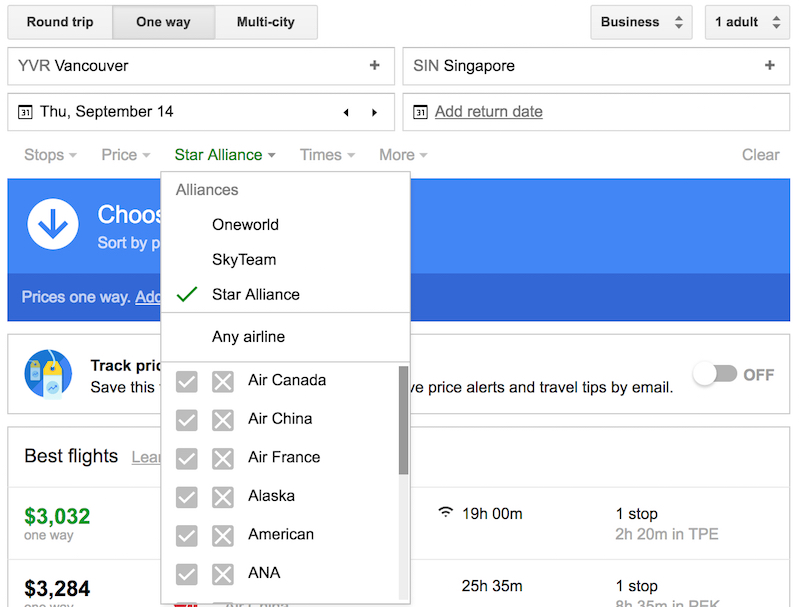 Tyler also decides he doesn’t want to connect more than once, so he adjusts the ‘Stops’ filter on the top left side under departure date.
Tyler also decides he doesn’t want to connect more than once, so he adjusts the ‘Stops’ filter on the top left side under departure date.
 Now with the search results, Tyler notices a few options that look good:
Now with the search results, Tyler notices a few options that look good:
- Connecting in Taipei on EVA Air
- Connecting in Hong Kong on Air Canada and United Airlines
- Connecting in Tokyo on All Nippon Airways
- Connecting in San Francisco on United Airlines
- Connecting in Beijing on Air China
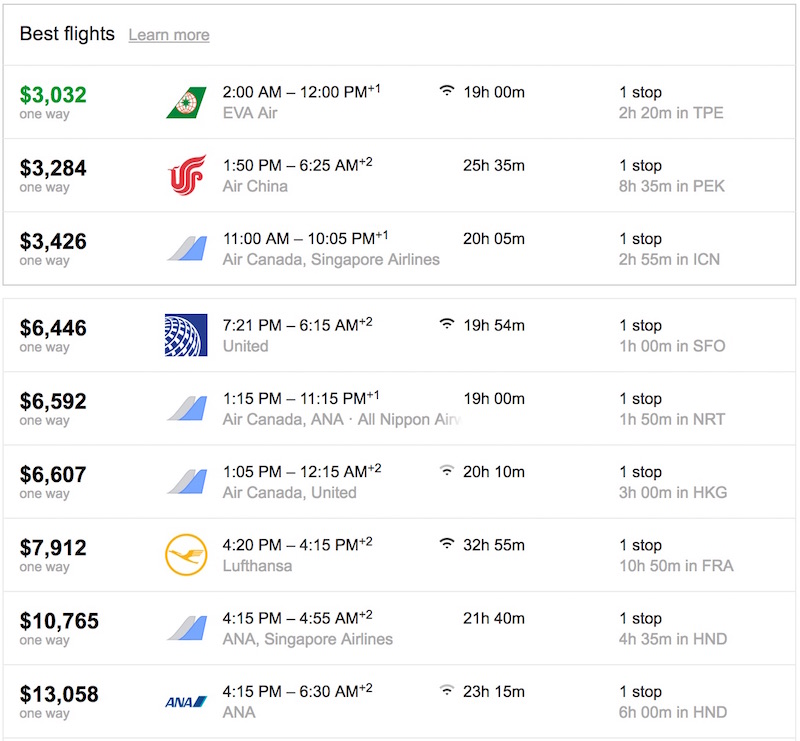 *It’s a good idea at this points to take note of all the connecting options (Beijing, Frankfurt, San Francisco, Tokyo Haneda, Seoul, etc as this will be helpful with searching for reward travel segment by segment).
Knowing that award seats can be difficult to find, Tyler also repeats the same process for airlines that partner with Alaska Airlines Mileage Plan. Since Alaska Airlines doesn’t belong to one of the ‘big 3’ alliances, Tyler will need to reference the Alaska Airlines partner page and individually select which airlines to filter in the search results.
*It’s a good idea at this points to take note of all the connecting options (Beijing, Frankfurt, San Francisco, Tokyo Haneda, Seoul, etc as this will be helpful with searching for reward travel segment by segment).
Knowing that award seats can be difficult to find, Tyler also repeats the same process for airlines that partner with Alaska Airlines Mileage Plan. Since Alaska Airlines doesn’t belong to one of the ‘big 3’ alliances, Tyler will need to reference the Alaska Airlines partner page and individually select which airlines to filter in the search results.
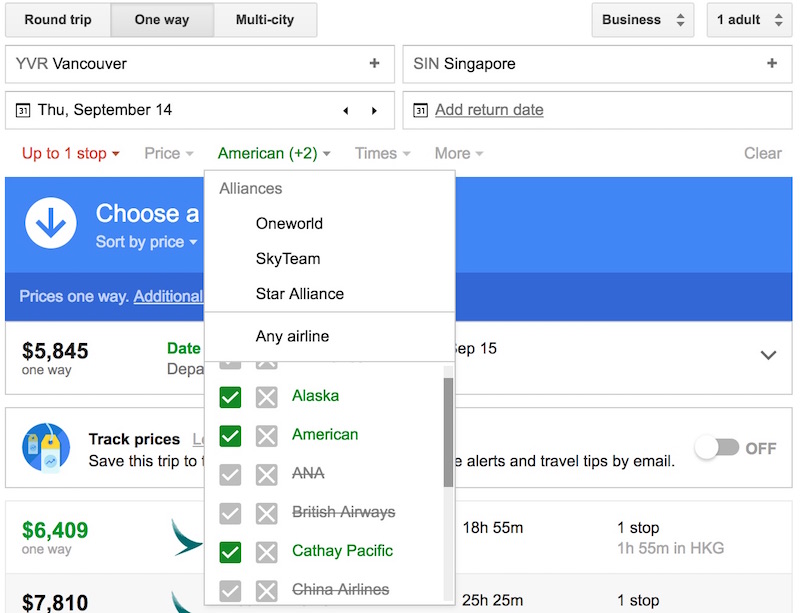 The search results show a good amount of partner routes, but many are displaying with very long connections.
The search results show a good amount of partner routes, but many are displaying with very long connections.
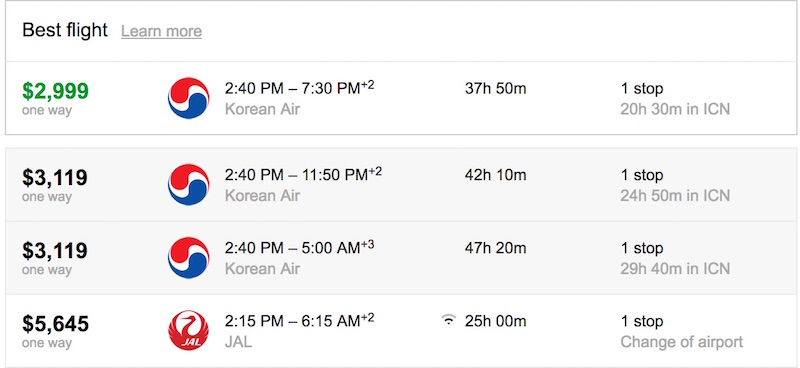 Tyler decides to filter the results further and search for flights 20 hours or less in total duration, including times spent at connection airports. He does this my adjusting the duration bar under the ‘More’ filter.
Tyler decides to filter the results further and search for flights 20 hours or less in total duration, including times spent at connection airports. He does this my adjusting the duration bar under the ‘More’ filter.
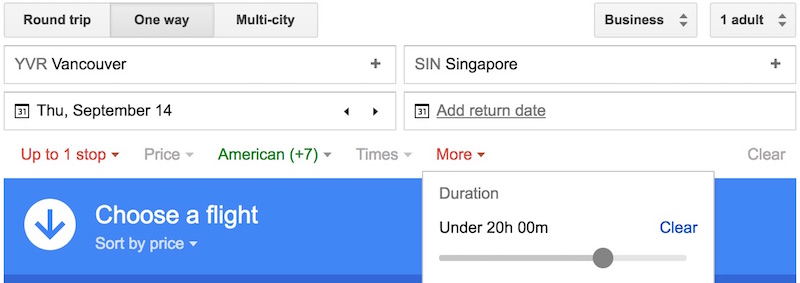 With all of his filters set, Tyler gets a list of possible flights he would be interested in redeeming Alaska miles for.
With all of his filters set, Tyler gets a list of possible flights he would be interested in redeeming Alaska miles for.
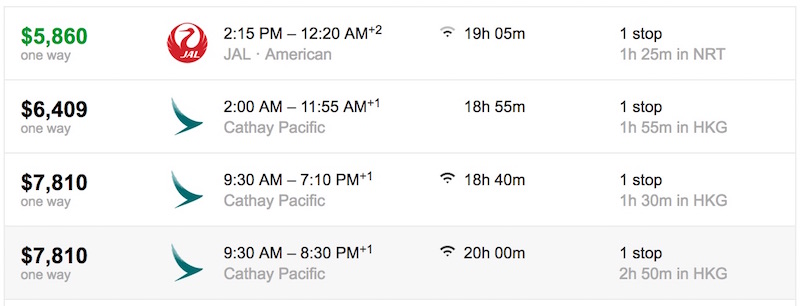 To see the details of a particular flight, including aircraft, flight number and in-flight amenities, simply select one of the displayed options.
To see the details of a particular flight, including aircraft, flight number and in-flight amenities, simply select one of the displayed options.
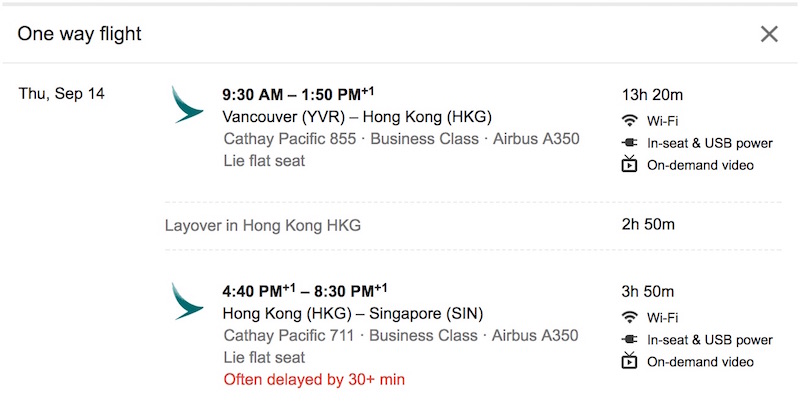 Now Tyler has a good starting point for options using Alaska Airlines Mileage plan:
Now Tyler has a good starting point for options using Alaska Airlines Mileage plan:
- Connecting in Hong Kong on Cathay Pacific (various flights)
- Connecting in Tokyo on Japan Airlines
So how is this all helpful in planning award travel?
- We’ve used the search tool to find all available flights between our origin and destination, and compared the airlines operating those routes to our program(s) of choice.
- We’ve used filters to further narrow our search results based on cabin class, connections, airline partners and alliances and flight duration to find flights specific to our travel plans.
- We’ve created a list of possible connection cities, which will be useful when searching for award space (generally done segment by segment for best results).
Earn
up to 15000 Amex points
Annual Fee:
Rewards:
Earn
5x
points
on eligible eats and drinks in Canada, including groceries and food delivery. Spend cap applies.